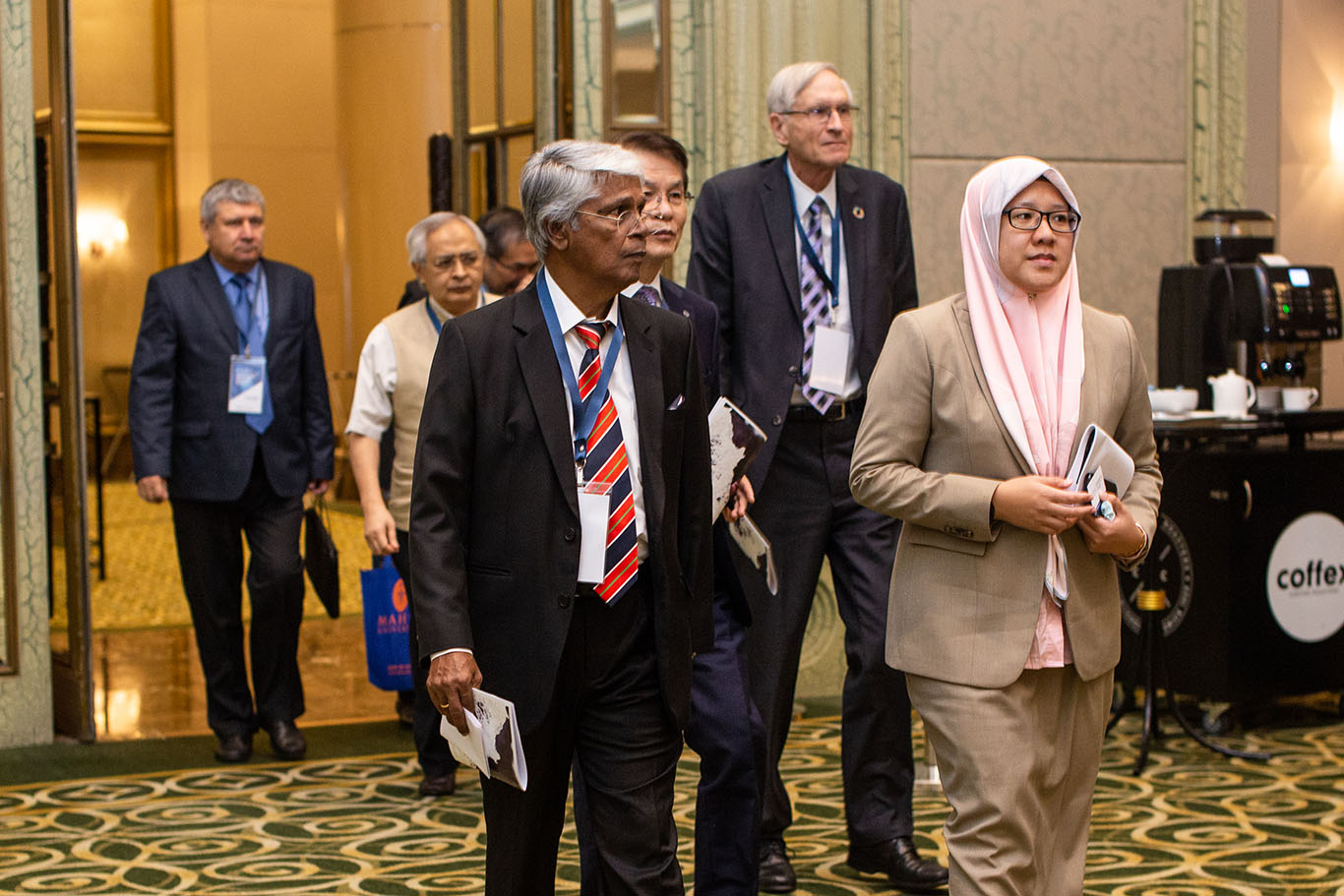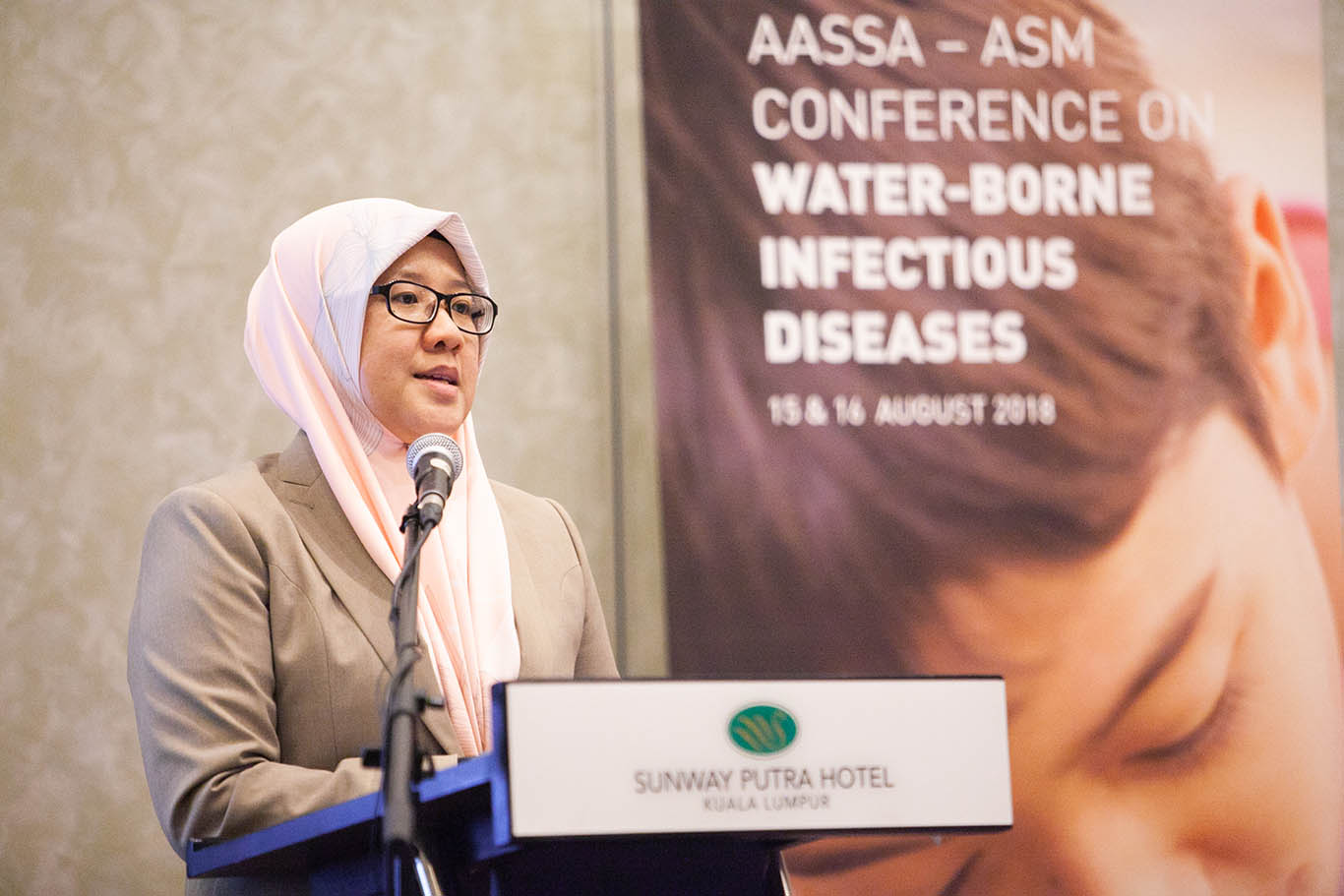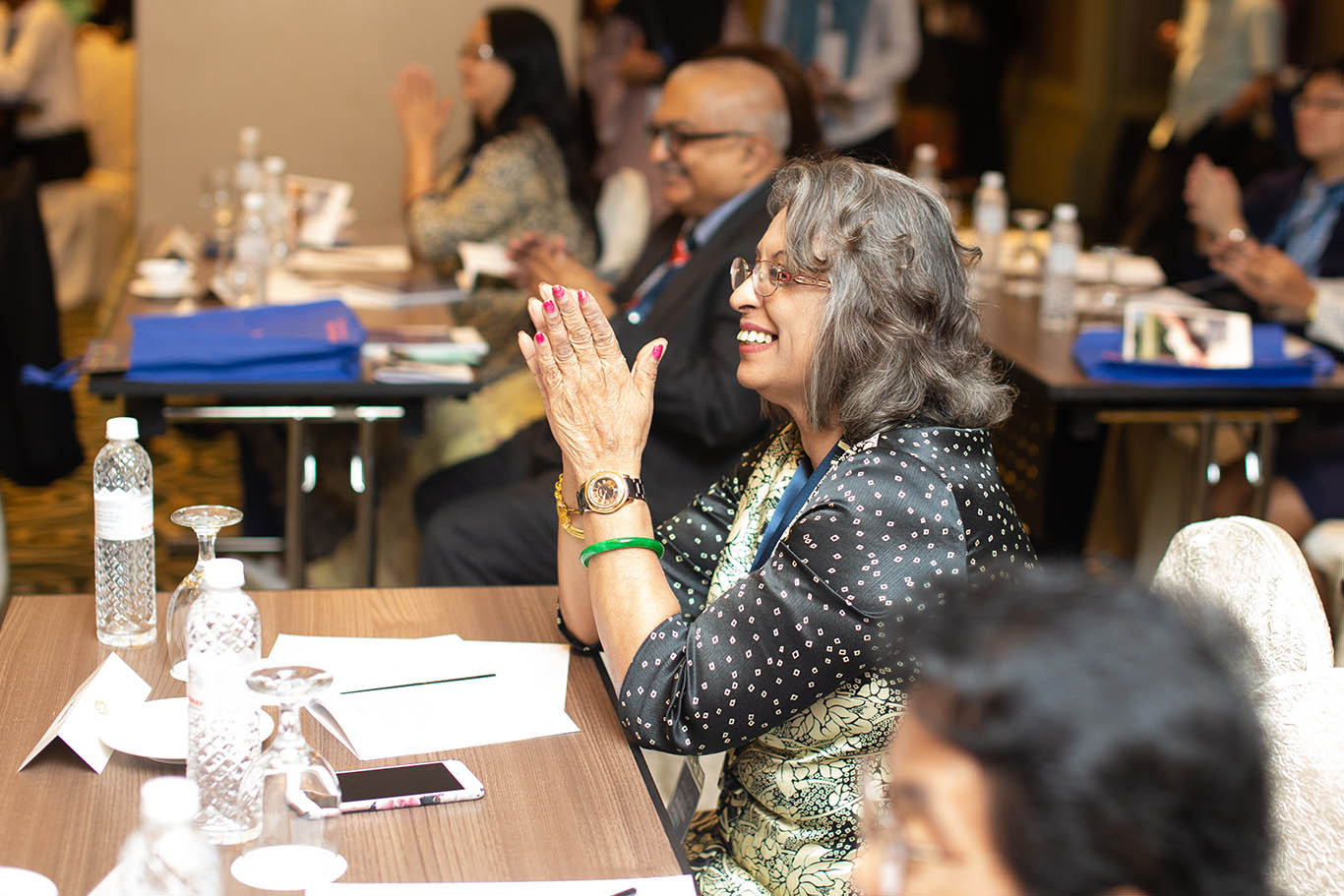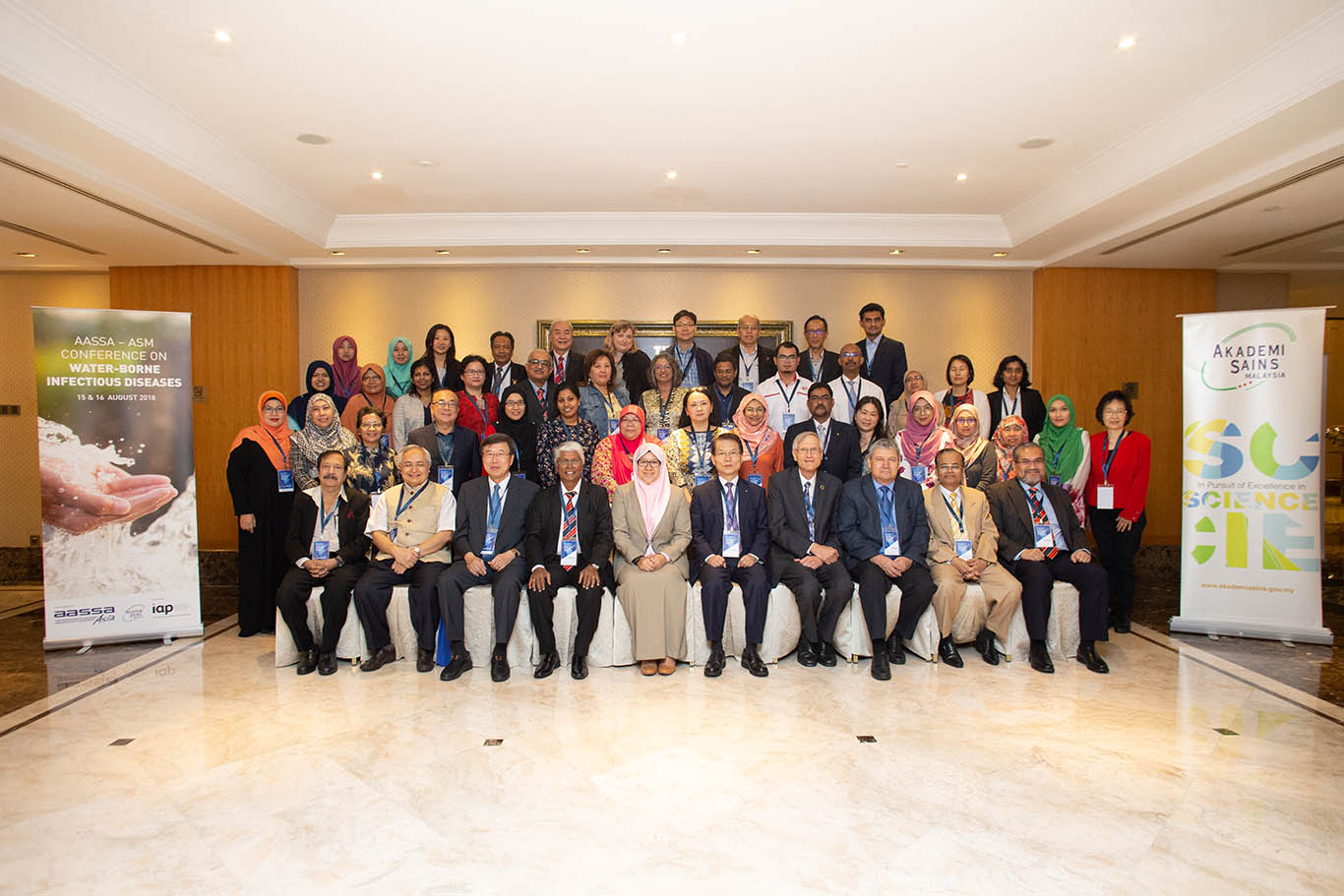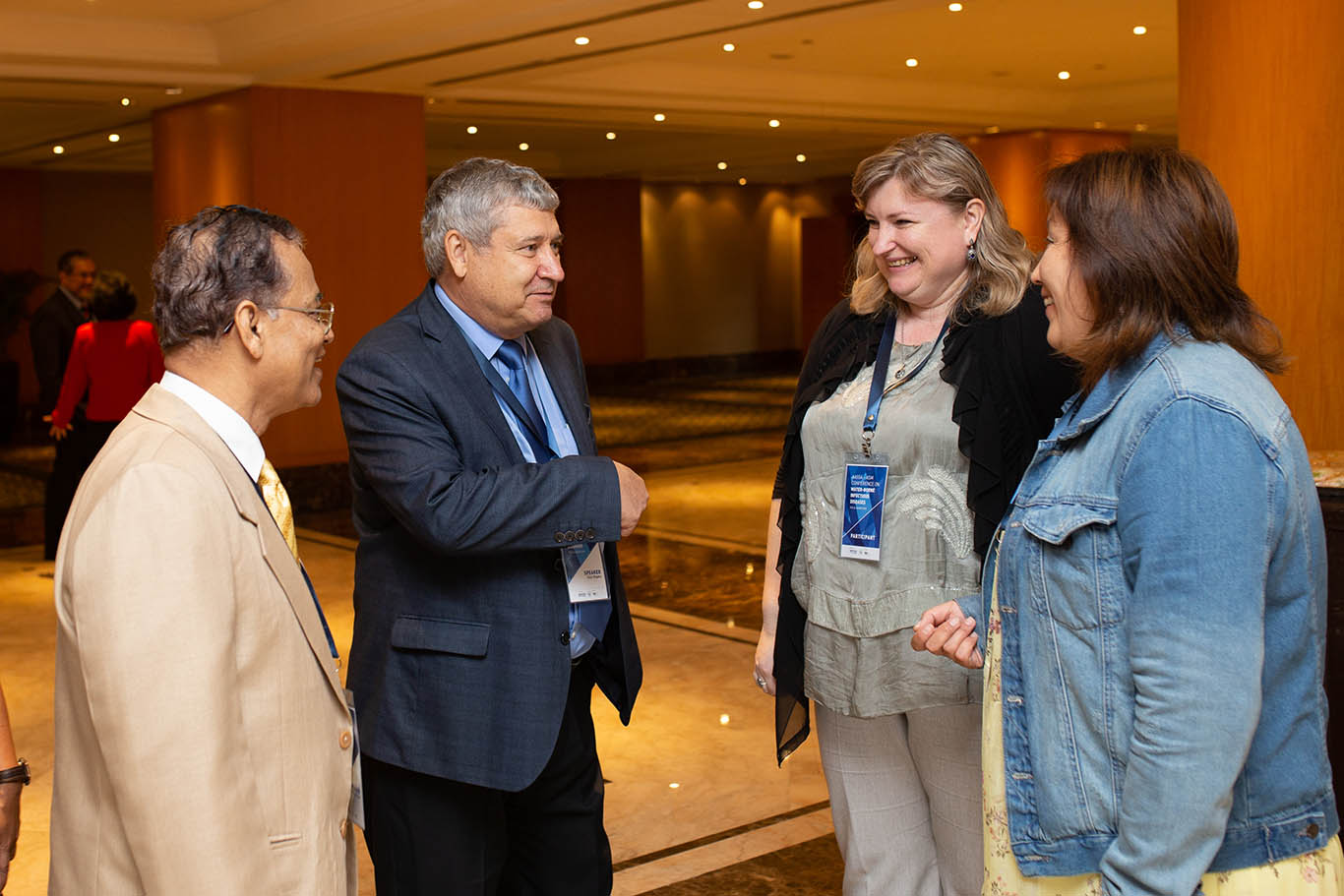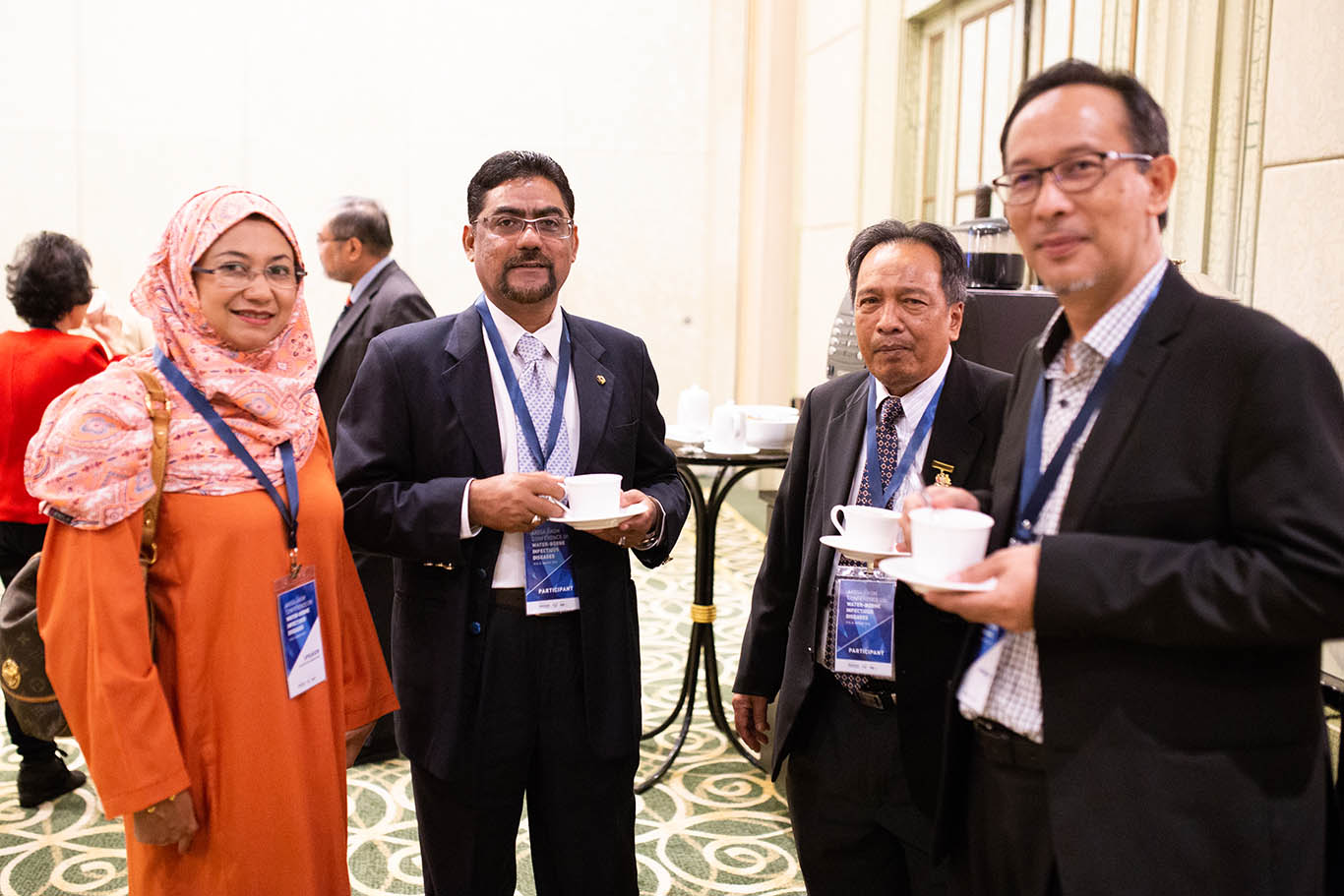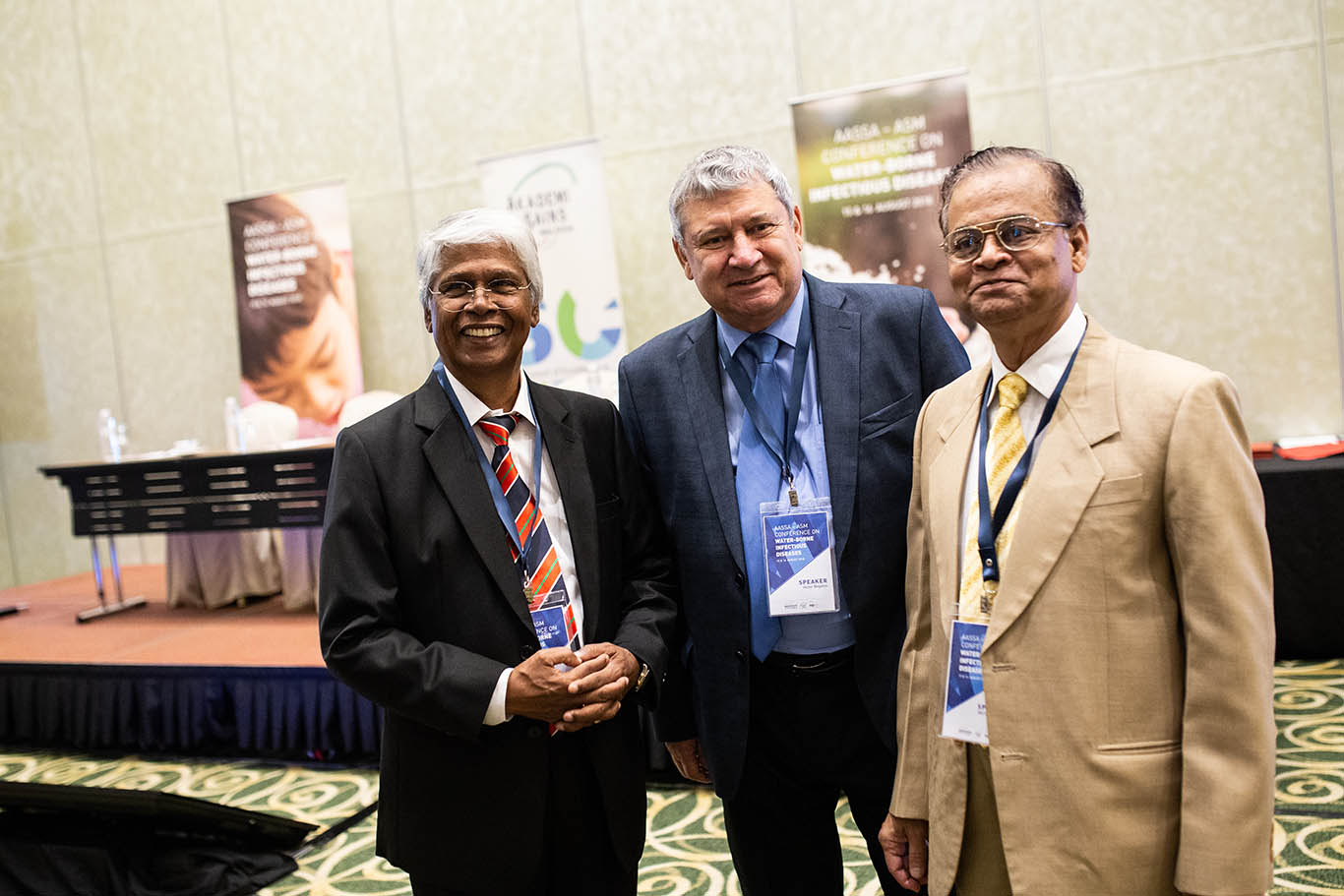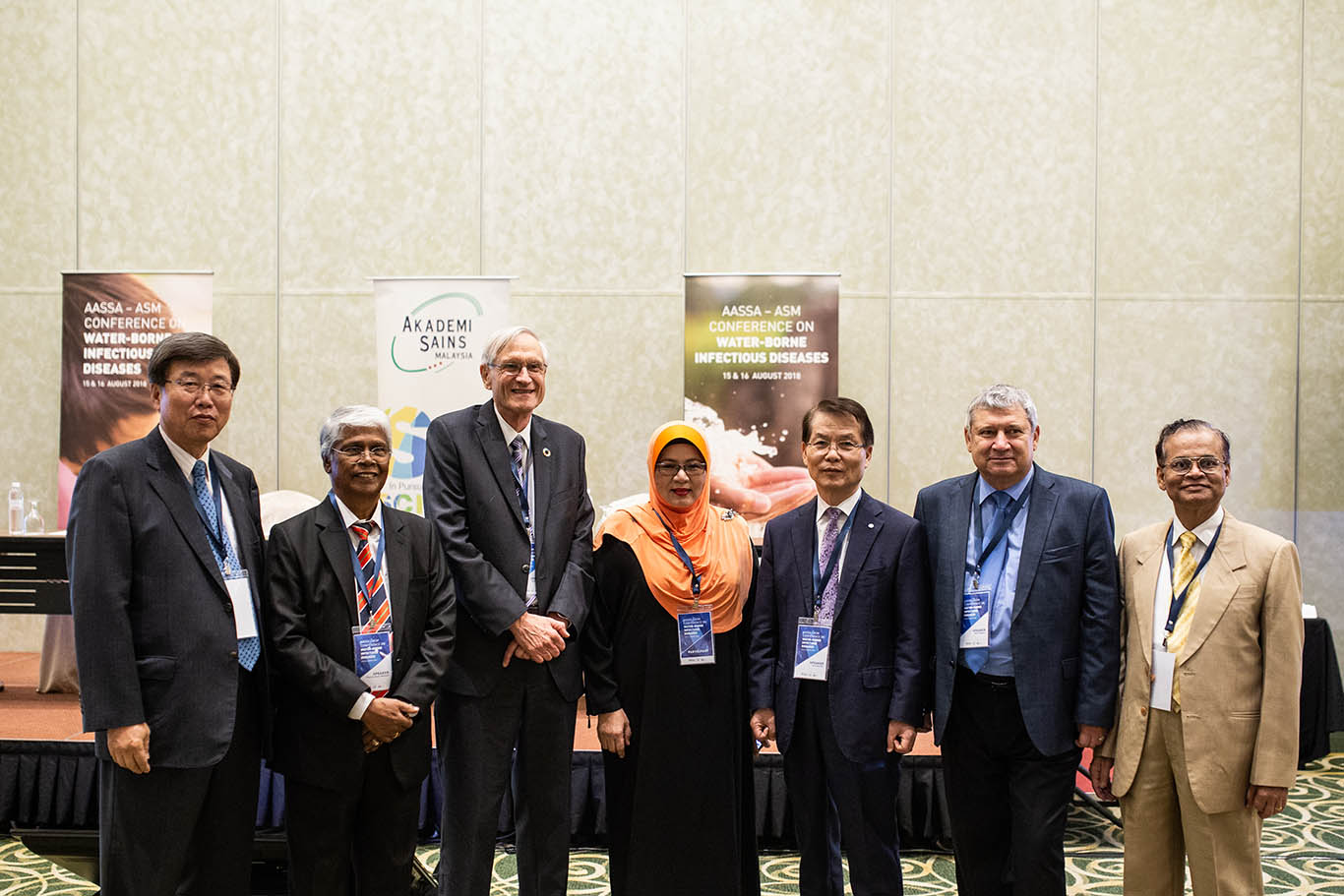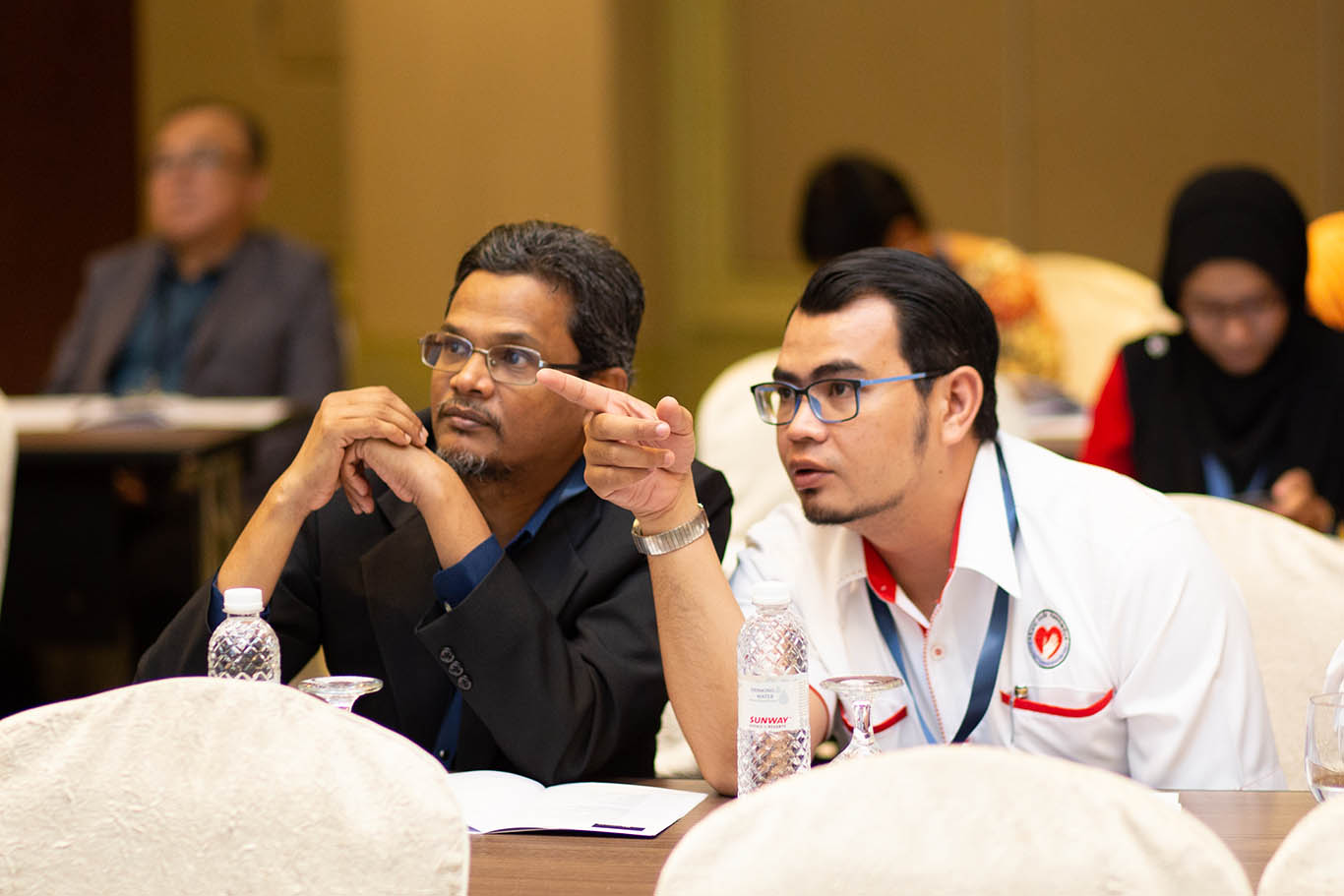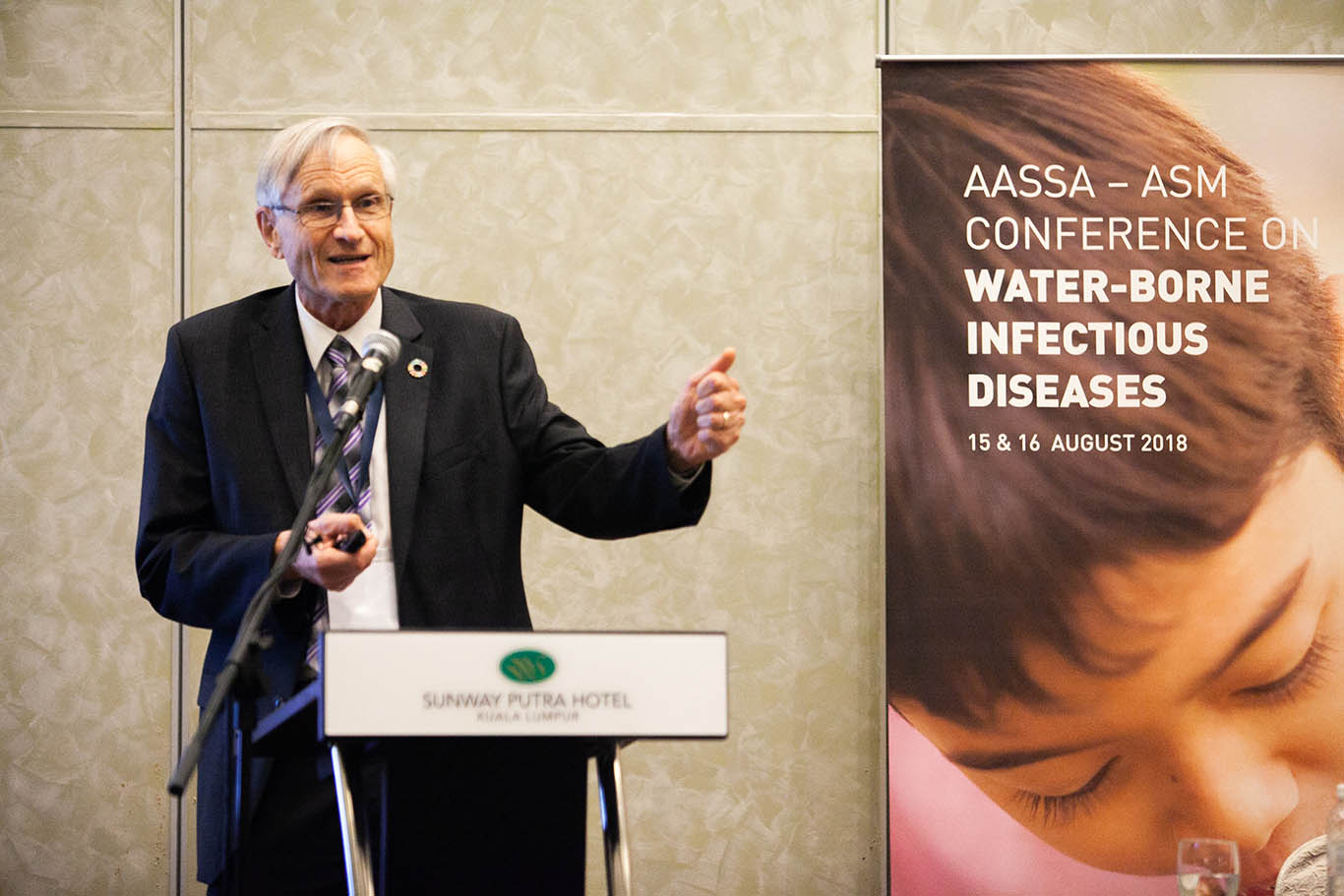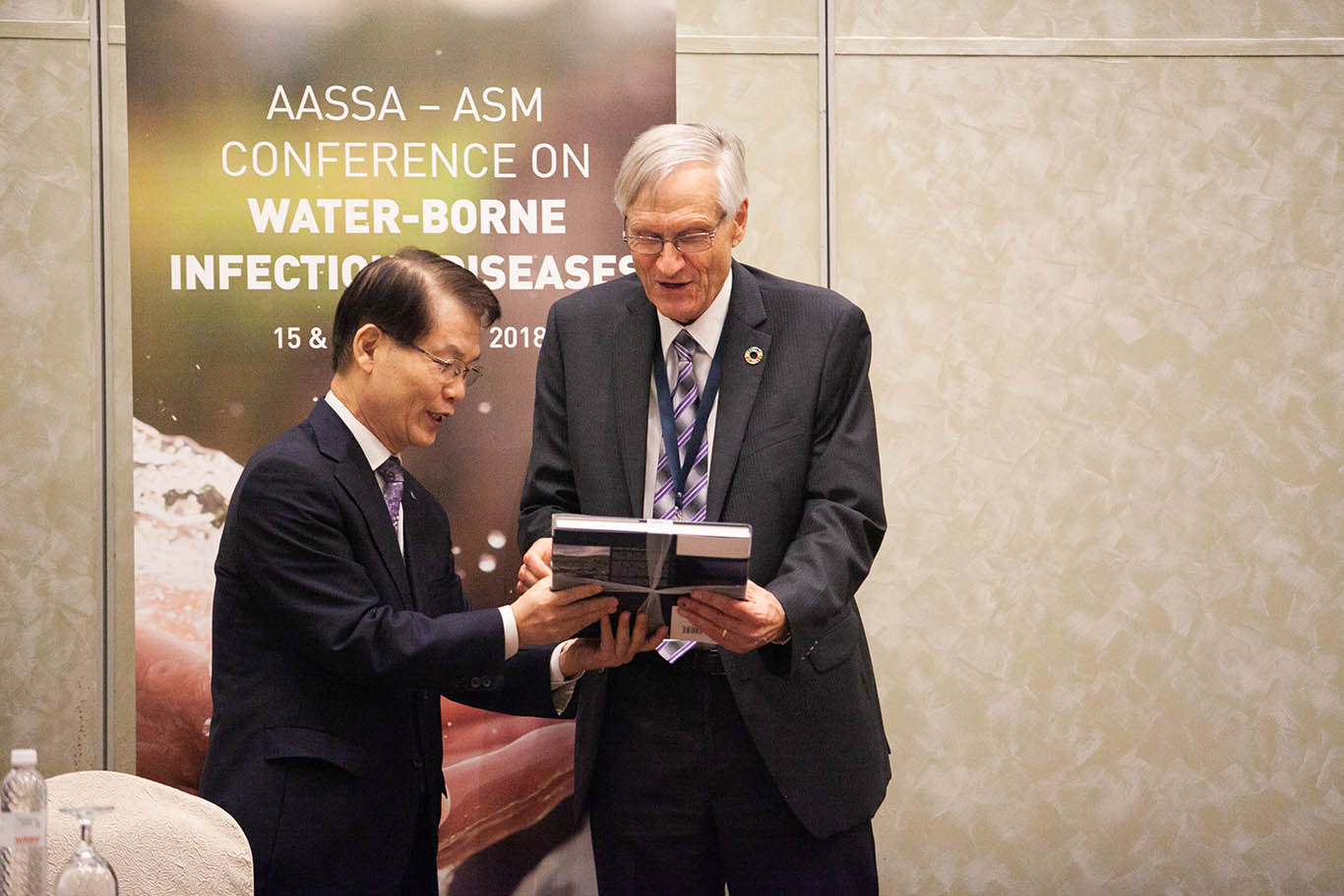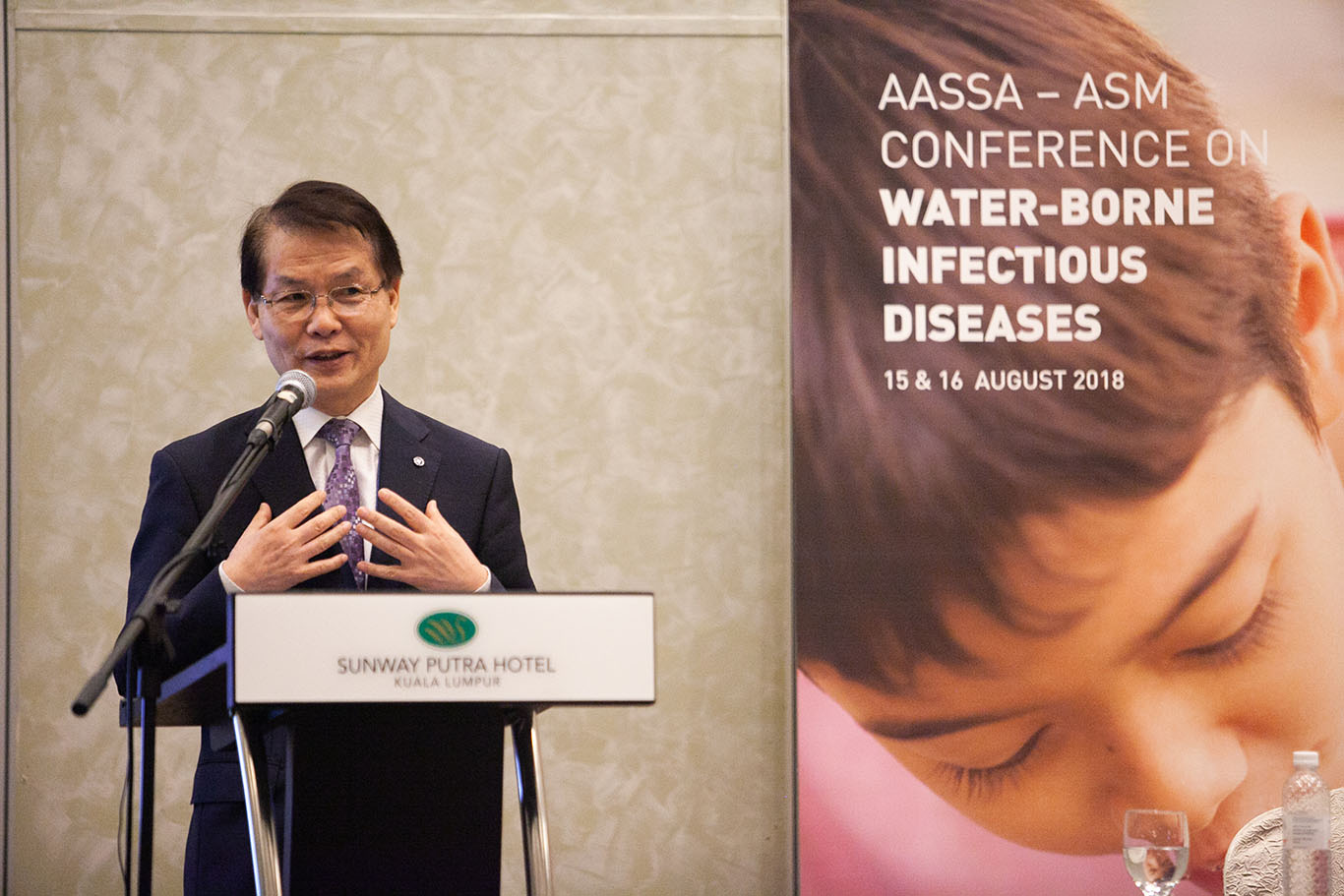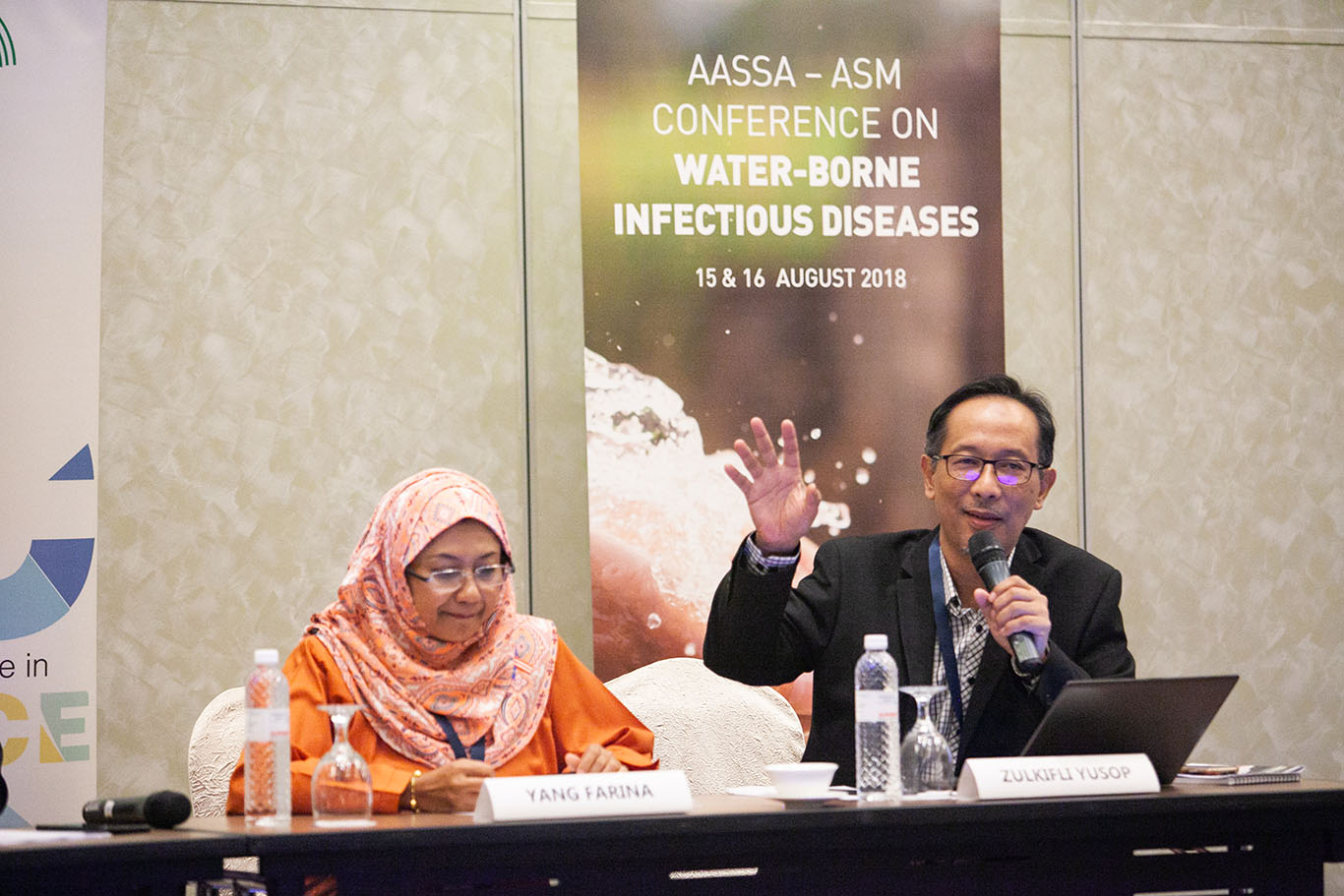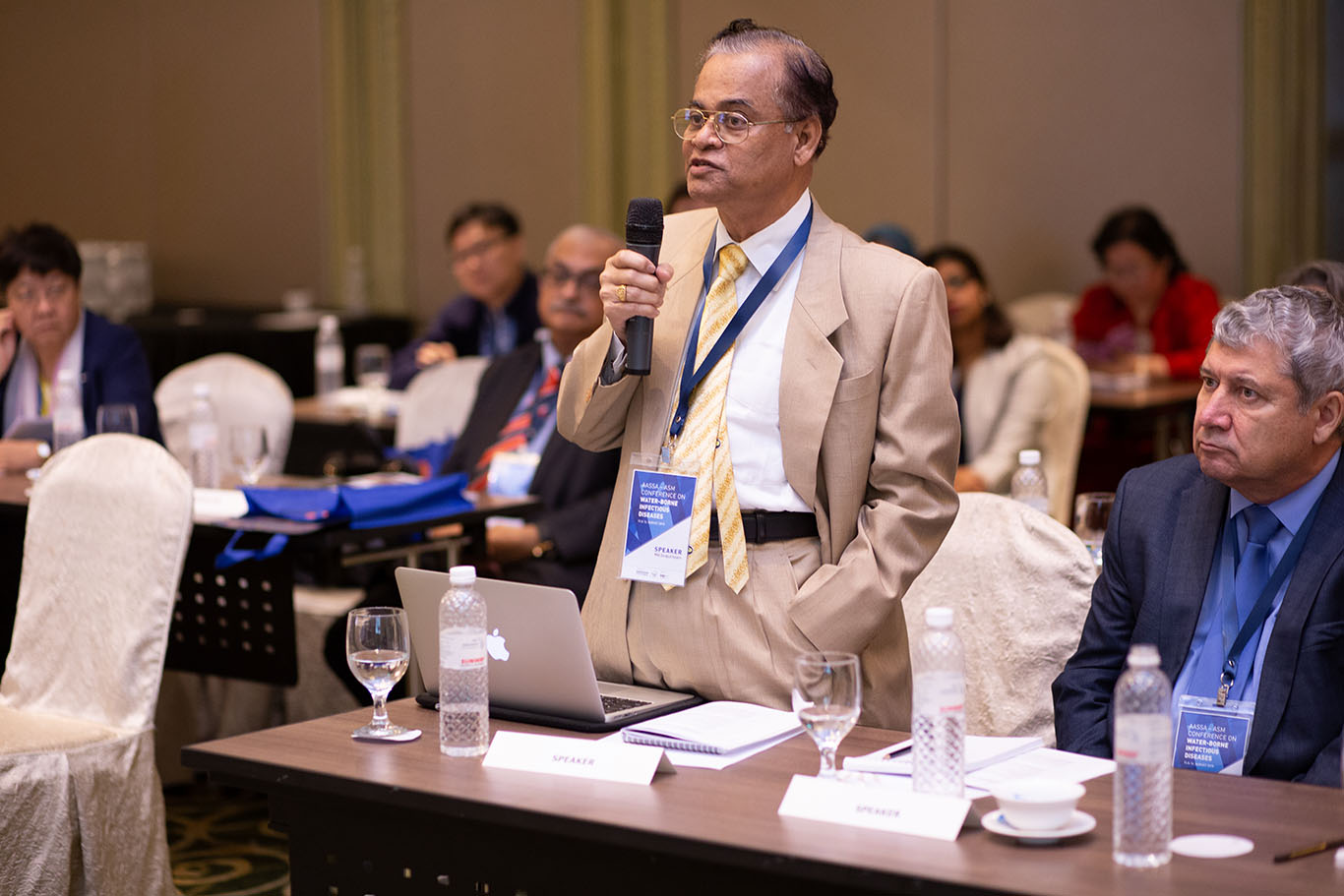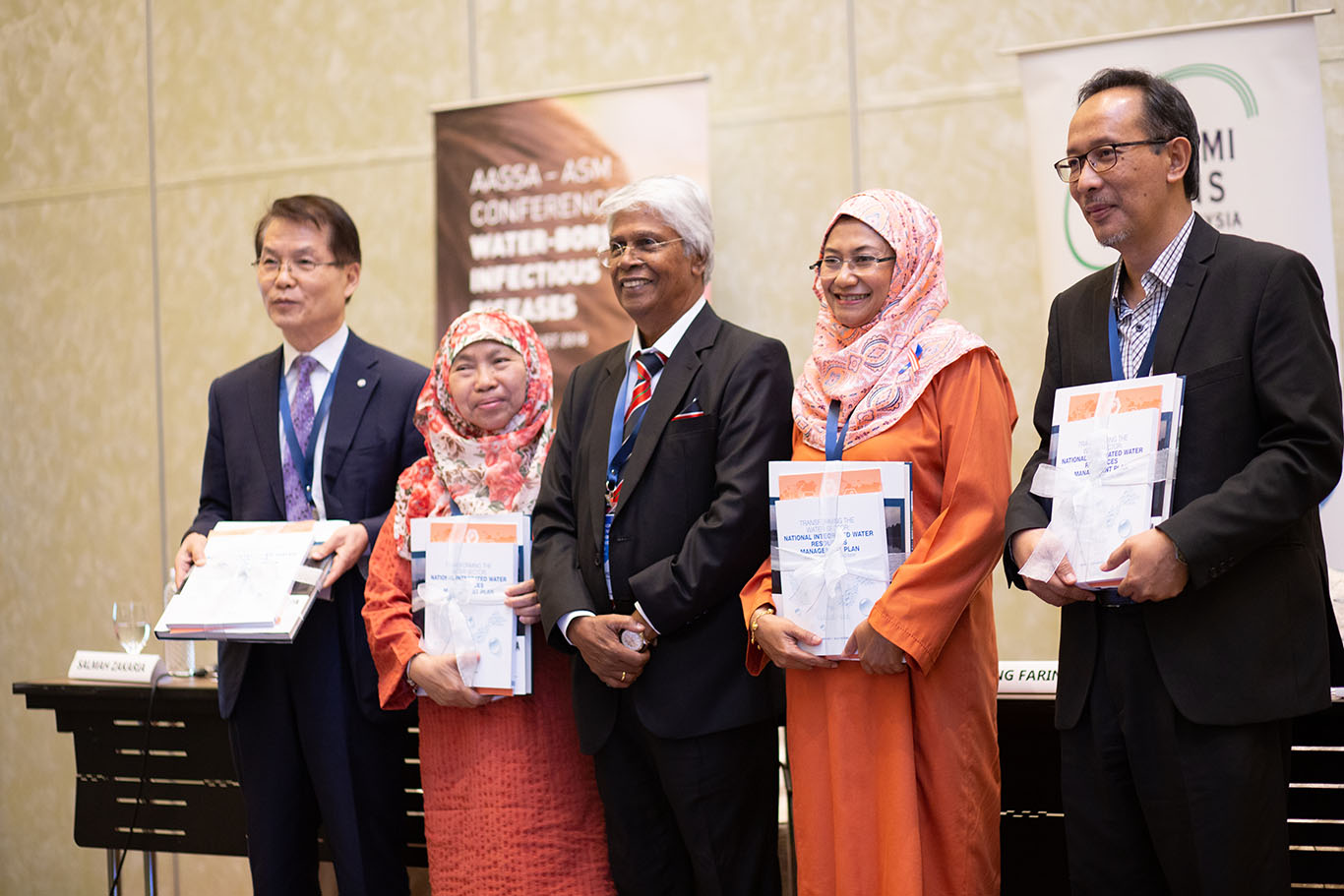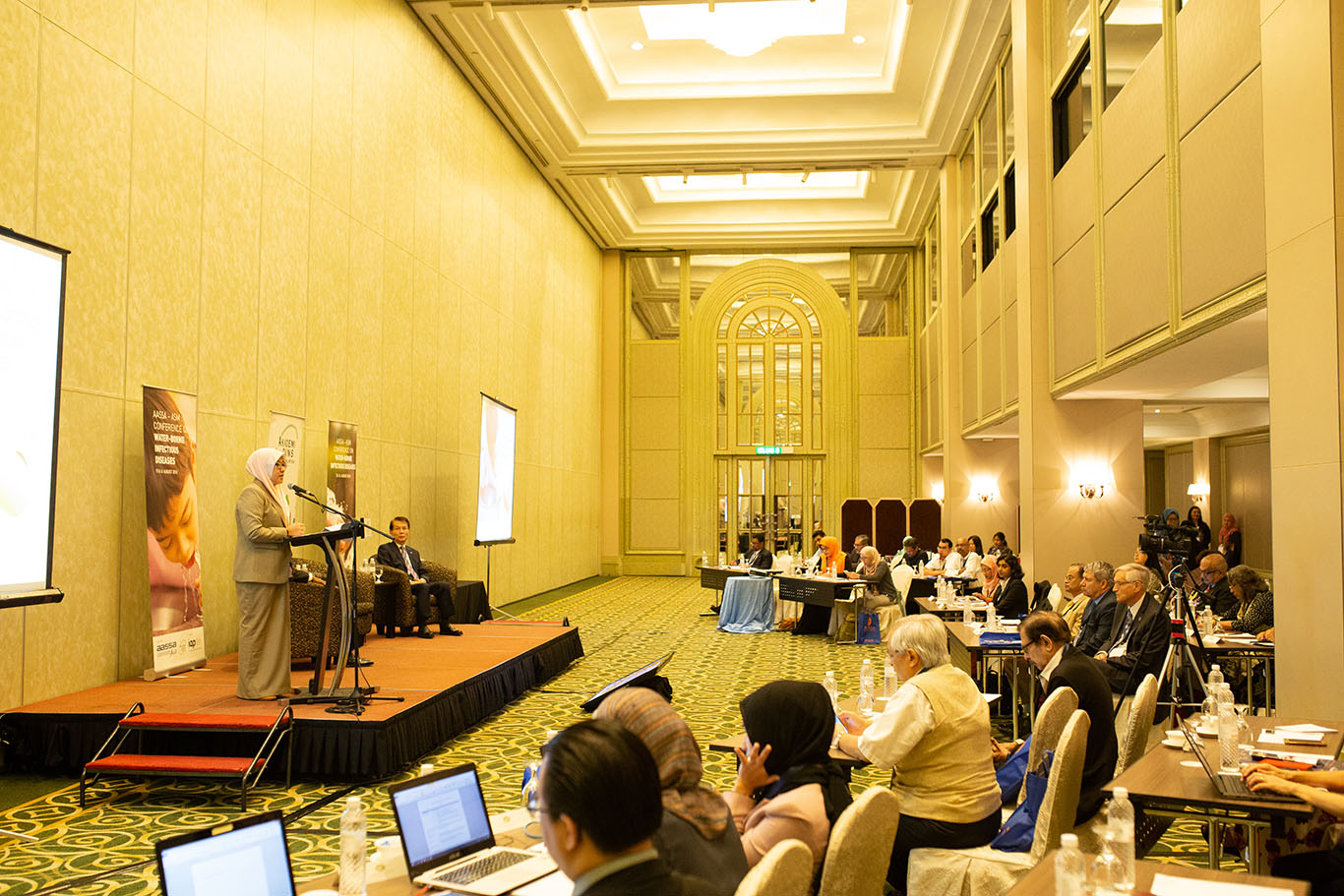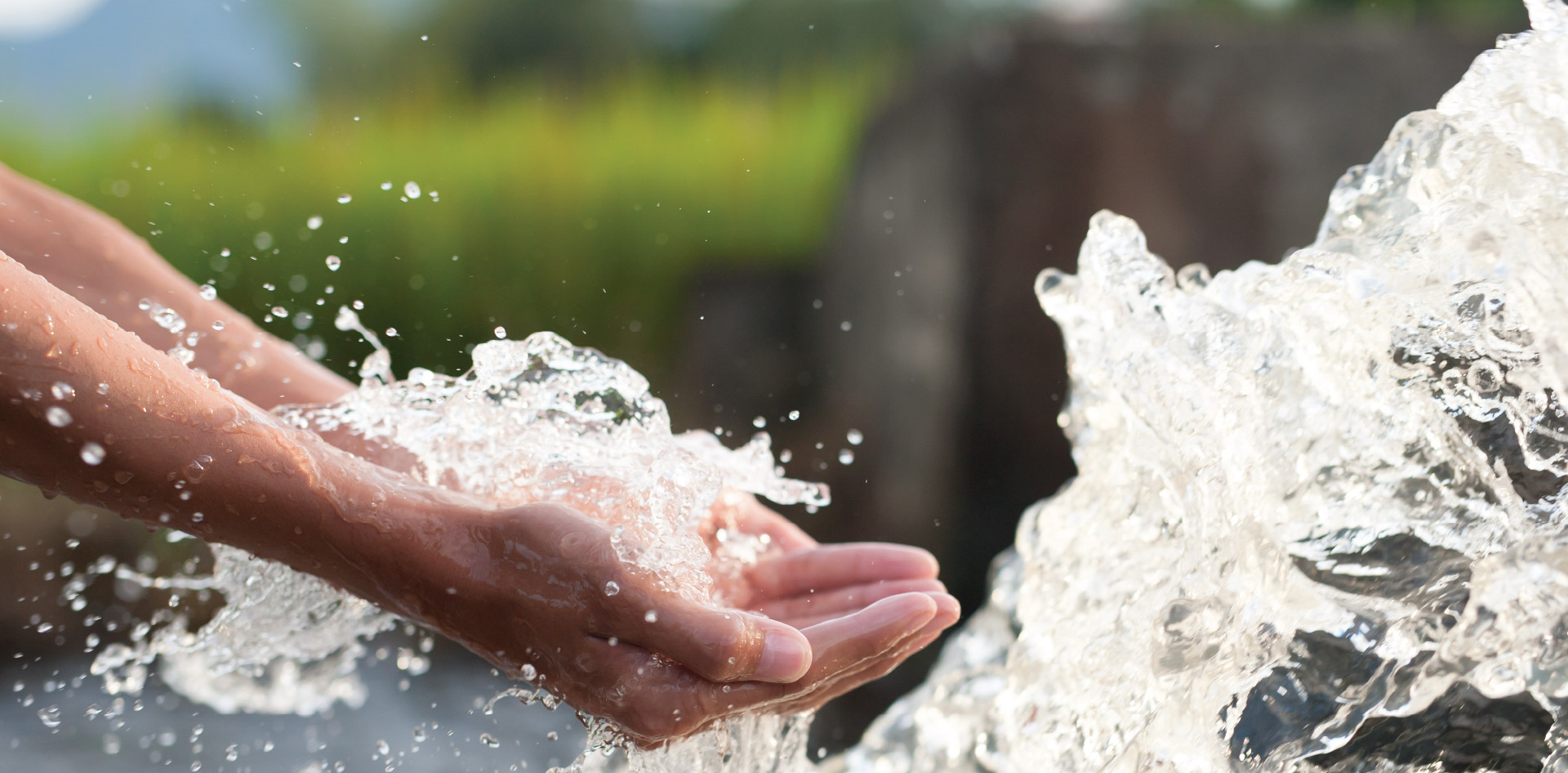
AASSA-ASM CONFERENCE ON
WATER-BORNE INFECTIOUS DISEASES
KUALA LUMPUR
15 & 16 AUGUST 2018
Water is essential for life. However, water also conveys death for almost all organisms on earth which is reflected as water borne diseases. Human being is highly susceptible to such infections where an array of water borne diseases is being encountered by us almost on a regular basis. Without adequate water and sanitation management services, people become vulnerable to the exposure of preventable health risks. Depending on the global climate change; prevalence of the type of disease differs from one climatic zone to other. The relationship between Water and Health is directly linked to water, sanitation and hygiene (WASH), a focus area of the World Health Organization (WHO). The inadequacy of WASH will lead to a significant impact of health and well-being and results in a large financial cost, including a sizeable of economic activity (WWAP, 2015).
The source of contamination and chemical pollution of the water bodies are from the poor management of agricultural, industrial and urban wastewater. This often leads to water-borne diseases caused by the presence of microorganisms, heavy metal and chemicals.
Diarrhoea is the most widely known disease and influence especially youngsters in developing nations; consistent with the WHO, such sickness represents an expected 4.1% of the aggregate worldwide load of health disorder leading to the death of 1.8 million human yearly. WHO gauges that 88% of that trouble is attributable to hazardous water supply, sanitation and hygiene.
Water-borne diseases can have a significant impact on the economy, locally as well as internationally. People who are infected by a water-borne disease are usually confronted with related costs and often with a huge financial burden. This is especially the case in less developed countries. The financial losses are mostly caused by e.g. costs for medical treatment and medication, costs for transport, special food, and by the loss of manpower.
On average, a family spends about 10% of the monthly household’s income per person infected. Unsafe water, inadequate sanitation and poor hygiene conditions can lead to cholera outbreaks and to Hepatitis E, a deadly disease for pregnant women and their babies, while stagnant water pools can attract malaria-carrying mosquitos.
Tentative Programme
09:00 am : Opening Ceremony
09:05 am : Welcoming Remarks
09:10 am : Message from AASSA
09:20 am : Speech & Officiating Ceremony
09.30 am : Group Photo Session
09.40 am : Coffee Break
10:00 am : Keynote Address 1: Issues of Global & Regional Water-borne Diseases
10:30 am : Keynote Address 2: Regional Role in the Provision of Treated Water (and Waterborne Infectious Diseases): Critical to delivering the UN’s Sustainable Development Goals
11:00 am : Plenary Session 1: Health, Water (and Water-borne Infectious Disease) Critical to delivering the UN’s Sustainable Development
12:30 pm : Lunch Break
14:00 pm : Plenary Session 2: Trends of Acquired Infections through Water, the Organisms
15:45 pm : Tea Break
16:00 pm : Free Paper Session 1: Regional Experience
17:45 pm : Tea and Adjourn
19:30 pm : Conference Dinner
09:00 am : Free Paper Session 2: Regional Experience
10.30 am : Coffee Break Intermittent
10.45 am : Plenary Session 3: Emerging Water-borne Infectious Diseases in Healthcare Settings
12.00 am : Summary of the Conference
12.15 am : Conference Resolution
12.30 am : Closing Address
13:00 pm : Lunch and Adjourn


